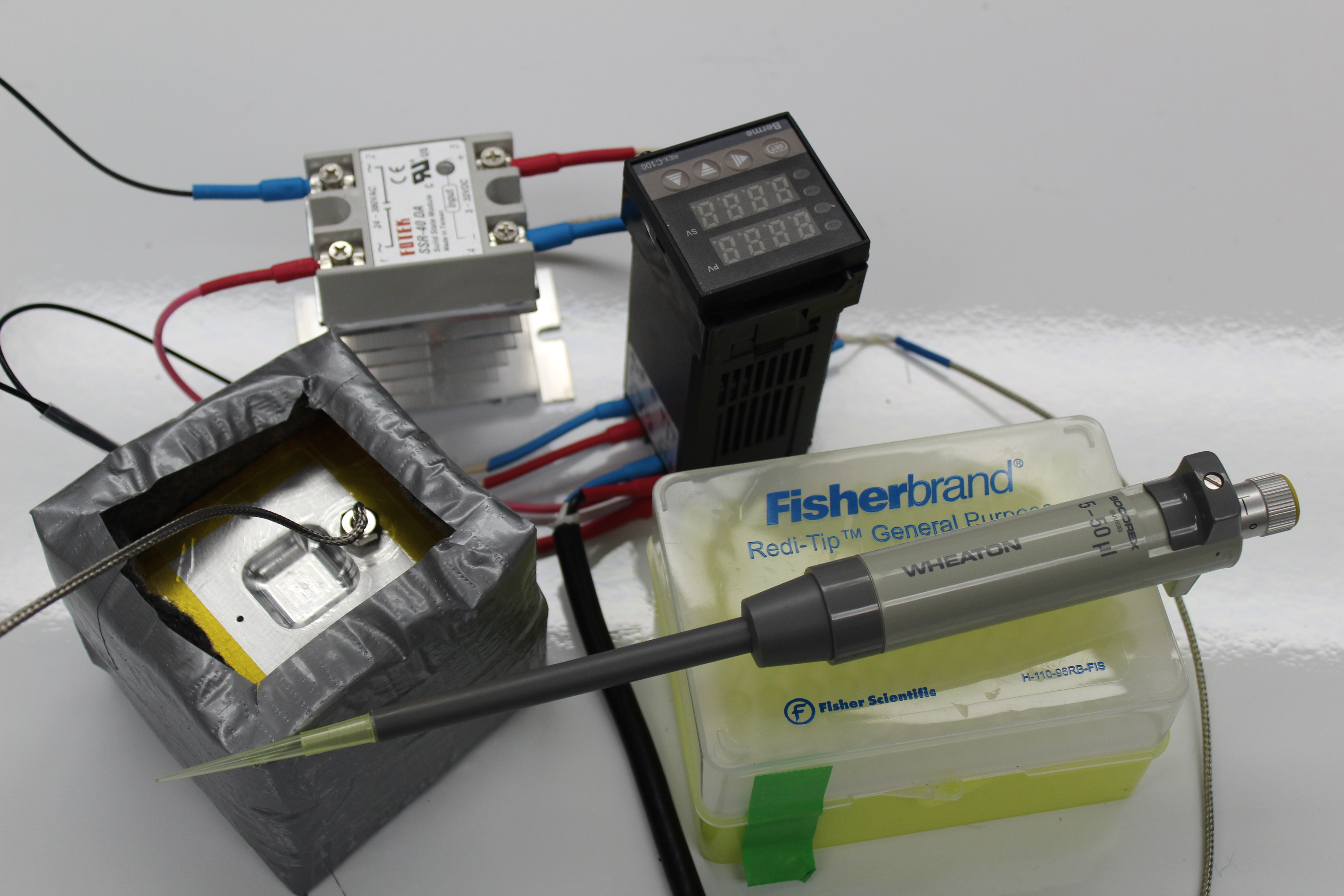Leidenfrost Effect
The rate of evaporation of a liquid droplet from a hot surface depends on the temperature of that surface, but it's not a monotonic relationship. As the surface temperature increases, a vapor barrier can form between the surface and droplet. This vapor barrier inhibits the transfer of thermal energy, and significantly raises the evaporation time. This experiment offers an opportunity to investigate this Leidenfrost Effect.
This experiment idea was stolen from John Essick at Reed College, and was built by Lisa Pham and Shemu Ariyasivam in 2016. It works well enough, and "rewards careful experimental technique." (Translation: Getting good results takes careful effort.)
Reading

Location
Bin in 108
Equipment needed
- REX-C100 Temperature controller unit
- 120V solid-state relay
- Aluminum "Hot Dish" for droplets
- Micropipette, 20µl
- stopwatch
Cautions
- The aluminum dish will be hot. Hazards are similar to those present while cooking food.
- In its present form, there are 120V electrical hazards present on the equipment. Electronics should be moved/rebuilt into a safer box.